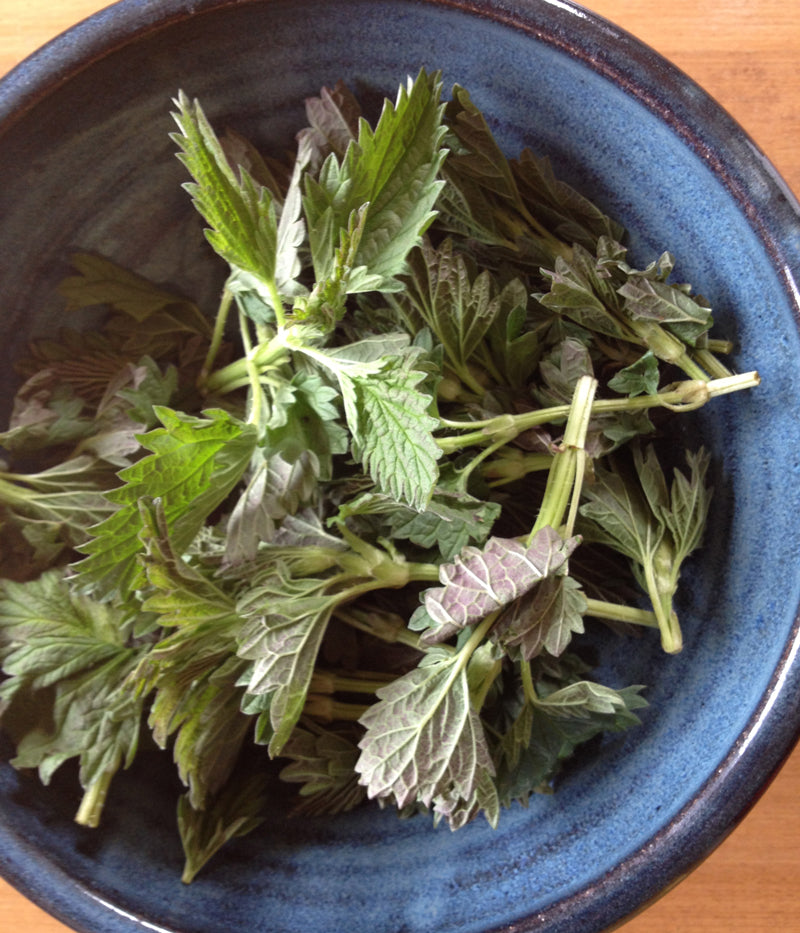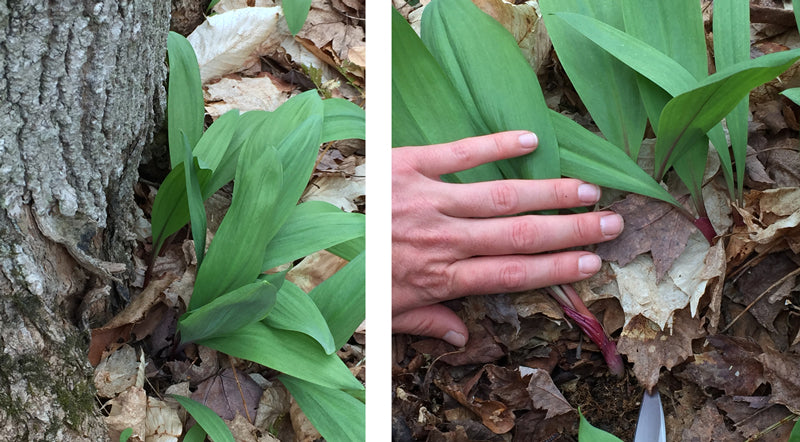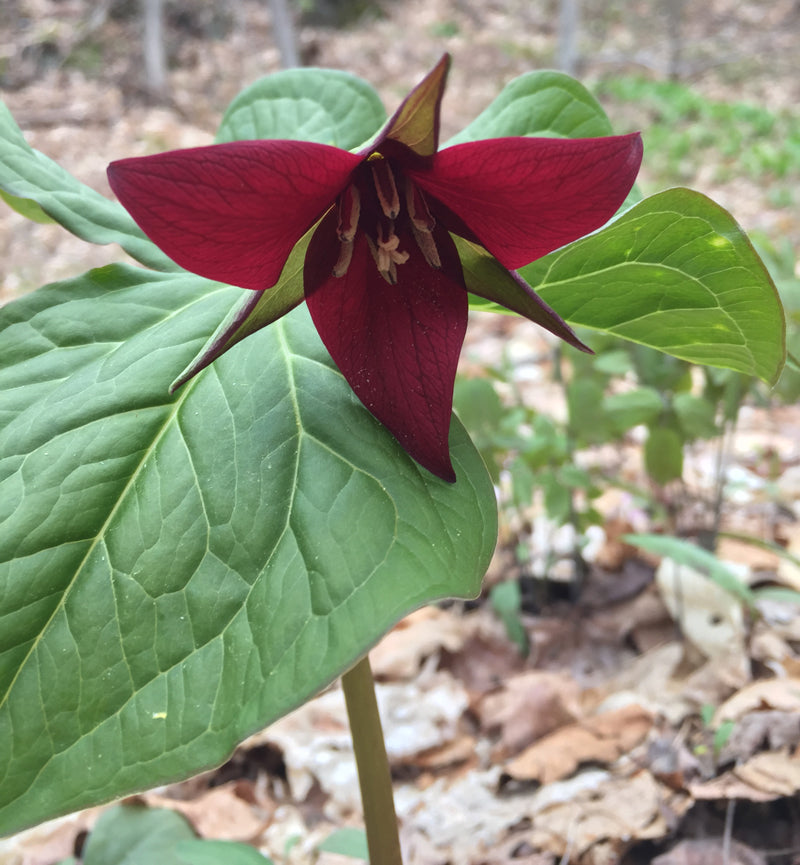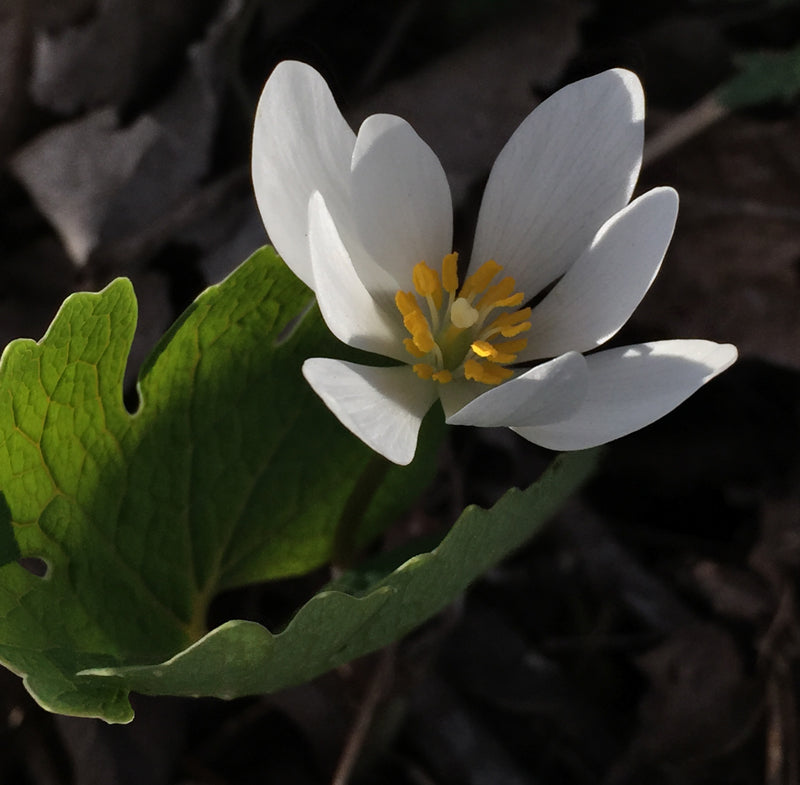As herbalists, one of the first things we think of when we feel the season shift is that in a matter of weeks, there will be an abundance of herbal medicines to harvest, eat, and preserve. Plants we don’t grow in our gardens can be wildcrafted in surrounding areas and we enjoy what the earth provides. As herbalists, we know the plants intimately, and we deepen our relationship with them each year. Knowing how to use wild plant medicine, and where to find food, also bears a significant commitment to being an herbal steward and to be radical in our approach to preserving the wild plants around us.
While the growth of the herbal, wellness and natural food industry is exciting and ever on the rise, what has come with it is mass production of herbs and a severe increase in over-harvesting. Wild foods have become hip and are sought out in trendy restaurants that will pay a good price for a few pounds of local wild edibles. What isn’t always apparent is that this has been resulting in the over-harvesting of popular favorites—like Wild Ramps, Fiddleheads.

At Urban Moonshine, we are committed to sourcing botanical ingredients according to rigorous sustainability standards, including criteria for measuring ecological, economic and social sustainability. Sustainability is at the core of our mission, so as our company grows, so too does our positive impact. We make conscious decisions not to use a plant that is at risk or rare when designing a formula because it depletes an already dwindling population. You won’t find herbs like Ginseng in our products, and the primary reason is to ensure that these precious plants don’t vanish forever.
As plant lovers and herbalists, it's our responsibility to think about what happens to these populations of species that are quickly becoming at risk, and to spread awareness on the subject. It is essential to think about this delicate relationship as we approach the peak seasons of abundance. If we are harvesting our food and herbal medicine, we then become accountable for the wild gardens, their health, and their survival.

Ways to harvest sustainably and conscientiously:
Educate yourself
Take the time to familiarize yourself with which plants are considered at risk and why. United Plant Savers is a non-profit grassroots organization that is dedicated to preserving native medicinal plants and the land they grow on; and ultimately, to ensure an abundant, renewable supply of organically cultivated medicinal herbs. Visit their website for more information on these wild medicines, and for current “at risk” or “to watch” plants. They are a great resource for budding herbalists, foresters, wildcrafters and gardeners!
Cultivate your favorite herbs whenever possible
Many native and medicinal plants also grow well in gardens, and this relieves some pressure from wild regeneration.
Make A Positive Identification
If there is any doubt, don’t harvest it. Get your information from multiple sources. Books and websites are a good support, or try attending a plant walk to get a skilled herbalist show you what to look for.
Take only what you need
Most dried herbs keep 6- 12 months, so be aware of how much you use, and only harvest just enough to last you until the next season.
Harvest from an area that is abundant, and make sure you leave plenty behind. This is especially important for slow growing native plants.
The general rule of thumb is to harvest LESS than 5% of the population!

Have multiple harvest spots and switch them up
When you get to know your local woods and wild areas you will begin to notice the patches of plants that come back year after year. Chances are if you live in an urban area, other people know about that spot as well. Try switching it up every year so as not to deplete a particular area of its medicinal plants. Side benefits will include the chance to get familiar with other wild spots in your town or city, and your range of stewardship will grow.
Know your land
Gather only in pollution free areas, where neither pesticides, industrial or agricultural runoff nor toxic waste is present. Also, make sure that you have permission to harvest in the area.
Be aware of the health of the environment
Make sure to take note of the environment that they plants are growing in. First off, make sure your plants are not contaminated by toxic waste, but also try to pay attention to whether the plants may already be growing in stressful situations, like drought. And if they are, don’t harvest them.
Know the plants
Familiarize yourself with the correct way to collect various parts of the plant without killing it, if possible. This ensures regrowth and cuts down on overall depletion of natural populations.
Know the best time of year for harvest
Think about where the energy & resources of the plant are being directed at any given point in the year, so you get the best use of your medicine. Is the plant growing leaves right now? Is it flowering, or sending energy into the root system for the winter?
Here are the basic rules of thumb for optimal harvest:
- Roots: Harvest in fall
- Bark: Harvest in spring, before the tree flowers
- Leaves: Harvest in spring, before flowering
- Flowers: Harvest when in bloom
- Fruit: Harvest when ripe
- Seeds: Harvest in late fall
Forgo the wild food craze
Make a commitment to not participate in the wild food craze. Instead, learn what else you can be harvesting or substituting.
Post-harvest practices
If you can, spread the seeds of the plant to ensure future growth of the plants.
Process immediately
Fresh plants can compost quickly, so process soon after so as not to waste the valuable herbal medicine.
Spread the word and be an herbal steward
Go back and monitor your harvest spots—become an herbal steward. Study the plants and how they respond. Harvest from areas that are due to be clear cut or developed, better yet—save the plants, dig them up and plant them in your garden! Just make sure that it is legal to do so first. Some native plants are protected from any harvesting or removal.
Speak up for the plants and have good intentions when using them.

Here are a few common wild plants to know about:
Wild Ramps Allium tricoccum
Ramps are now on the “To-Watch” list--meaning that they are currently most sensitive to the impact of human activities. Because ramps are one of the most sought out foods of the early spring, most people completely overlook the fact that they are now considered at risk. Because of its new place on the to-watch list, it’s best just to forgo the harvest of them. If you feel like you can’t commit to that, the common practice is to adopt the “leaves-only” approach, which means leaving the bulbs behind and to take only one leaf per plant. This is a crucial practice to ensure that these wild foods do not disappear.
If you see a local vendor selling ramps with bulbs, ask them to consider changing their practices so that ramps will grow for years to come.
TRILLIUM Trillium grandiflorum
Trillium, or bethroot, has a long record of use. The flowers are a mix of dark red, white and the painted trillium and are all listed as Endangered, Threatened or Vulnerable. It takes over seven years for a single trillium to mature and bloom, and it only produces a limited number of seeds. These plants should be left alone and unpicked.

Bloodroot Sanguinaria canadensis
Bloodroot is a native spring wildflower and one of the first that we see this time of year. Its pearly white flowers unfurl through its leaves and are a welcome sight after a long winter. Because we are often so starved for fresh flowers, these beauties get picked far too often.

The Lady Slipper Orchid Cypripedium acaule
Lady Slipper is a beautiful native wildflower that is extremely fragile in nature and germinates at very low rates.
Fiddleheads Matteuccia struthiopteris
Fiddleheads or ostrich fern’s coiled heads are harvested from the banks of rivers, streams, and brooks in early spring. They have hit co-op produce stands and restaurants like wildfire, and like ramps they have contributed to much of the wild food craze. Because they are so fresh and delicious and considered a cash crop, there is potential for them to be completely wiped out. When you pluck a fiddlehead fern, no plant grows in its place. If we continue to harvest at these rates, these plants will soon take their place on the to-watch list.
Common practice is to take one head per stalk.

Many of the oldest plants of the eastern forests, including many important medicinal plants, have either completely disappeared or are in short supply; like Ginseng and Goldenseal.
While there are significant efforts to preserve these wild plant medicines, we need to learn and spread the knowledge to of how to care for these plants. Otherwise, we will see them vanish from our woods and fields.
Updated: April 2019







